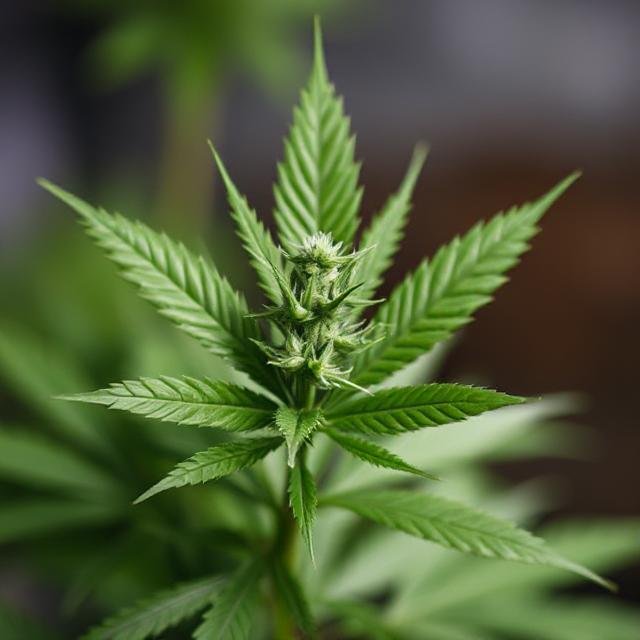What is Cannabis Use Disorder?
Cannabis Use Disorder (CUD) is a condition characterized by a problematic pattern of cannabis use leading to significant distress or impairment. People with CUD often find themselves unable to cut down or control use despite negative consequences in relationships, work, school, or health.
Though cannabis is increasingly legalized and socially accepted, CUD is a real and growing concern in 2025, particularly among adolescents and young adults.
How Common is Cannabis Use Disorder?
According to the National Institute on Drug Abuse (2025), approximately 10-30% of people who use cannabis develop some level of cannabis use disorder. The rates are even higher among daily users, with around 1 in 3 daily users showing signs of dependence.
Rising THC concentrations in modern cannabis products, combined with changing laws and social attitudes, have contributed to increasing diagnoses of CUD.
Signs and Symptoms of CUD
Common symptoms of CUD include:
- Cravings or strong urges to use cannabis
- Using more cannabis than intended
- Difficulty cutting down despite wanting to stop
- Spending significant time obtaining, using, or recovering from cannabis
- Neglecting responsibilities at work, school, or home
- Continued use despite social or relationship problems
- Developing tolerance (needing more to achieve the same effect)
- Experiencing withdrawal symptoms such as irritability, sleep issues, decreased appetite, or anxiety
Many individuals don’t recognize their use as problematic until it seriously interferes with their lives.
Causes and Risk Factors
CUD is influenced by several factors:
- Genetics: A family history of substance use disorders increases risk.
- Brain chemistry: Cannabis affects brain regions involved in reward and self-control.
- Mental health conditions: Anxiety, depression, PTSD, and ADHD are associated with higher rates of CUD.
- Age of first use: Early initiation (under age 18) significantly increases the risk of developing CUD.
- Environmental and social factors: Peer influence, stress, trauma, and cultural attitudes play key roles.
Importantly, not everyone who uses cannabis develops CUD. Individual vulnerability varies.
Health Effects and Risks of Cannabis Use Disorder
Potential harms associated with CUD include:
- Cognitive difficulties (memory, attention, learning problems)
- Increased risk of anxiety, depression, and psychosis, especially in high-risk individuals
- Decreased motivation and academic/work performance
- Respiratory problems from smoking cannabis
- Potential impact on brain development in adolescents and young adults
- Increased risk of other substance use disorders
Long-term heavy use can result in Cannabinoid Hyperemesis Syndrome (CHS), characterized by severe nausea and vomiting requiring medical care.
Diagnosing Cannabis Use Disorder
Diagnosis involves:
- A clinical interview exploring cannabis use patterns and related consequences
- Assessment against criteria in the DSM-5-TR (2024 update)
- Evaluating mental health and co-occurring substance use issues
CUD severity is categorized as mild, moderate, or severe depending on the number of symptoms present.
Evidence-Based Treatments for CUD
Treatment for CUD focuses on both psychological and behavioral approaches:
Cognitive Behavioral Therapy (CBT)
Helps individuals identify triggers, challenge unhelpful thoughts, and develop coping strategies.
Motivational Enhancement Therapy (MET)
Focuses on strengthening a person’s motivation and commitment to change.
Contingency Management
Offers tangible rewards for maintaining abstinence, proven effective in substance use treatment.
Medications
Currently, no FDA-approved medications specifically treat CUD, though research is ongoing into potential pharmacotherapies.
Support Groups
Peer support groups can reduce isolation and provide encouragement during recovery.
Living with CUD: Steps Toward Recovery
Recovery from CUD is possible with the right support. Helpful strategies include:
- Recognizing personal triggers and avoiding high-risk situations
- Setting realistic, achievable goals for cutting back or quitting
- Developing hobbies and interests unrelated to cannabis
- Practicing stress management techniques like mindfulness or exercise
- Seeking professional help if attempts to quit alone are unsuccessful
- Building a supportive network of friends, family, or peers in recovery
It’s essential to remember that relapse is part of many recovery journeys. Progress, not perfection, is the goal.













